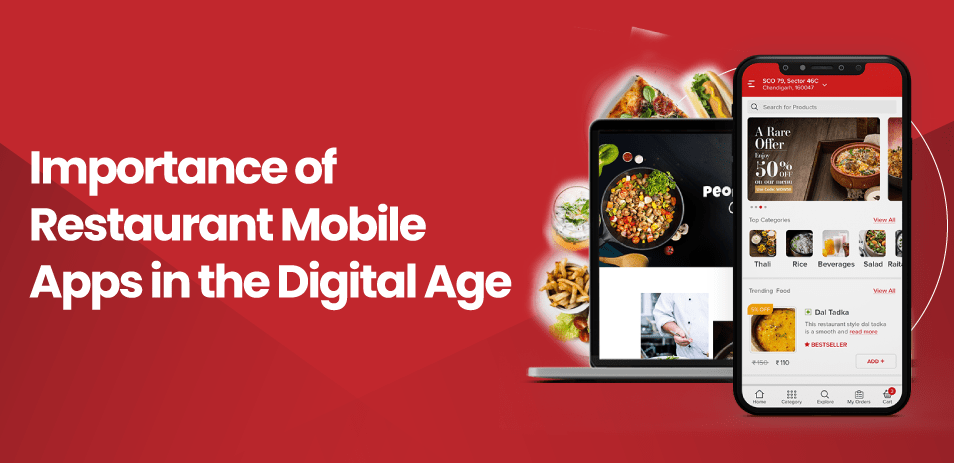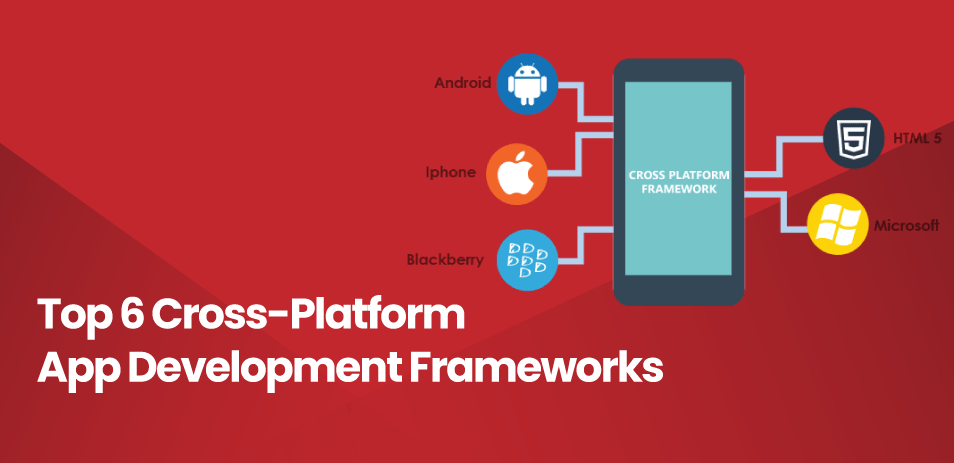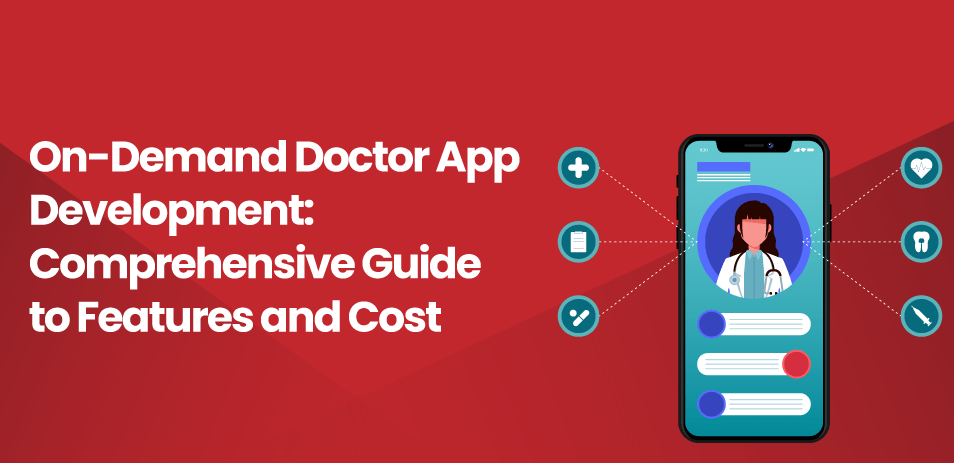In today’s modern age, the food industry is undergoing a significant transformation. One of the most notable changes is the widespread adoption of restaurant mobile apps. These apps have become an indispensable tool for both diners and restaurant owners, revolutionizing the way we interact with food establishments.
Definition of a Restaurant Mobile App
A restaurant mobile app is a digital platform designed specifically for use on mobile devices such as smartphones and tablets. It serves as an interface between customers and restaurants, offering a range of features and functionalities tailored to enhance the dining experience. From browsing menus and placing orders to making reservations and earning loyalty rewards, these apps provide a convenient and efficient way for users to engage with their favorite eateries.
Early Forms of Restaurant Digital Presence
Before the advent of mobile apps, restaurants relied on various digital channels to establish their presence online. This typically involved creating websites to showcase menus, locations, and contact information. While these websites provided a basic level of accessibility for customers, they lacked the interactivity and convenience that mobile apps would later offer. Some restaurants also experimented with online ordering systems, allowing customers to place orders through their websites or third-party platforms. While these systems represented a step forward in convenience, they were often cumbersome to use and limited in functionality compared to modern mobile apps.
- The revenue in the Online Food Delivery market is forecasted to reach US$1.22tn in 2024.
- It is expected to exhibit a compound annual growth rate (CAGR 2024-2028) of 10.06%, resulting in a projected market volume of US$1.79tn by 2028.
- The user penetration in the Meal Delivery market will be approximately 27.5% in 2024.
Emergence of Mobile Apps in the Restaurant Industry
The emergence of smartphones and mobile technology paved the way for a new era of dining experiences. As mobile usage skyrocketed, restaurants began to recognize the potential of mobile apps as a powerful tool for engaging with customers and streamlining operations. In the early 2010s, pioneering restaurants and tech-savvy entrepreneurs started developing mobile apps specifically tailored to the needs of diners.
These apps offered features such as online ordering, table reservations, and loyalty programs, providing customers with unprecedented convenience and flexibility. For a restaurant owner looking to embark on this journey, finding reputable mobile app developers near me is crucial. Partnering with local developers not only facilitates communication and collaboration but also fosters a deeper understanding of the local market landscape and customer preferences.
Growth and Development of Restaurant Mobile Apps Over Time
As consumer demand for restaurant mobile apps grew, so did the sophistication and diversity of available offerings. Restaurants of all sizes and cuisines began investing in mobile app development, recognizing the competitive advantage and revenue potential that mobile apps could provide. Over time, restaurant mobile apps evolved to incorporate a wide range of features and functionalities, including:
| Online Ordering | Seamless integration with restaurant menus and payment systems, allowing customers to place orders for pickup or delivery directly from their smartphones. |
| Table Reservations | User-friendly booking systems that enable customers to reserve tables at their preferred restaurants with just a few taps. |
| Loyalty Programs | Reward programs and digital punch cards that incentivize repeat visits and customer loyalty through exclusive offers and discounts. |
| Push Notifications | Targeted messages and promotions delivered directly to users’ devices, keeping them informed about special events, deals, and new menu items. |
| Integration with Third-Party Services | Collaboration with delivery platforms and payment gateways to expand reach and convenience for customers. |
Key Features of Restaurant Mobile Apps
Restaurant mobile apps have become indispensable tools for both customers and restaurant owners, offering a wide range of features and functionalities that enhance the dining experience. From convenient ordering options to personalized rewards programs, these apps cater to the diverse needs of modern diners. Let’s explore some of the key features that make restaurant mobile apps so valuable:
Online Ordering and Reservation System
| Feature | Description |
| Menu Browsing | Intuitive interface for browsing restaurant menus, complete with descriptions, images, and pricing. |
| Order Placement | Seamless ordering process allowing customers to customize orders, specify preferences, and add items to their cart. |
| Delivery or Pickup Options | Flexibility to choose between delivery to a specified location or pickup from the restaurant. |
| Real-Time Updates | Instant confirmation of order placement and updates on order status, including preparation and delivery times. |
| Reservation Booking | Easy-to-use reservation system for booking tables at the restaurant, with options to specify party size, date, and time. |
Menu Browsing and Customization Options
| Feature | Description |
| Search Functionality | Quick search feature to find specific dishes or categories within the menu. |
| Filtering and Sorting | Options to filter menu items based on dietary preferences, allergens, or special requirements. |
| Favorites and Recents | Ability to mark favorite dishes for easy access and view recently ordered items for quick reordering. |
| Customization | Interactive menus that allow customers to customize their orders by choosing ingredients, toppings, or portion sizes. |
| Allergen Information | Clear labeling of allergens and dietary restrictions to help customers make informed choices. |
Loyalty Programs and Rewards
| Feature | Description |
| Points Accumulation | Loyalty points system that rewards customers for each purchase or visit to the restaurant. |
| Redemption Options | Flexible redemption options for loyalty points, including discounts, free items, or special offers. |
| Exclusive Benefits | Access to exclusive promotions, events, or menu items reserved for loyal customers. |
| Tiered Rewards | Graduated reward tiers based on customer spending or engagement, with increasing benefits at higher levels. |
| Referral Programs | Incentives for referring friends or family to the app, such as bonus points or discounts on future orders. |
Integration with Third-Party Delivery Services
| Feature | Description |
| Seamless Integration | Integration with popular third-party delivery platforms, allowing customers to order delivery directly through the app. |
| Real-Time Tracking | Live tracking of delivery orders, with updates on the status of the order and estimated delivery time. |
| Delivery Preferences | Options to specify delivery instructions, such as gate codes or building entrances, to ensure smooth delivery. |
| Payment Integration | Secure payment processing for delivery orders, with options to save payment information for future orders. |
| Feedback and Ratings | Ability to provide feedback and ratings for delivery experiences, helping to improve service quality. |
Push Notifications and Promotions
| Feature | Description |
| Promotional Offers | Notification of special promotions, discounts, or limited-time offers available at the restaurant. |
| Event Reminders | Reminders for upcoming events, such as happy hours, live music performances, or seasonal menus. |
| Order Updates | Notifications on order status, including confirmation, preparation, and delivery updates. |
| Feedback Requests | Requests for feedback or reviews after completing an order, with incentives for participation. |
| Personalized Recommendations | Tailored recommendations based on past orders, preferences, or browsing history, to enhance the customer experience. |
These key features collectively contribute to the success and popularity of restaurant mobile apps, providing customers with convenience, choice, and rewards, while empowering restaurant owners with tools to streamline operations and enhance customer engagement. In the next sections, we’ll delve deeper into the benefits of restaurant mobile apps for both customers and restaurant owners, as well as considerations for developing and implementing these apps effectively.
Benefits of Restaurant Mobile Apps
1- Enhanced Convenience and Accessibility:
Restaurant mobile apps provide customers with unparalleled convenience by allowing them to access menus, place orders, and make reservations at any time, from anywhere. This accessibility eliminates the need for customers to physically visit or call the restaurant, streamlining the dining experience and saving valuable time for both parties.
2- Improved Customer Engagement and Loyalty:
Through loyalty programs, push notifications, and personalized offers, restaurant mobile apps foster stronger connections with customers, encouraging repeat visits and building brand loyalty. By staying engaged with customers through targeted promotions and timely updates, restaurants can ensure top-of-mind awareness and increase customer retention.
3- Streamlined Operations and Order Management:
Restaurant mobile apps streamline operations by automating order processing, table management, and inventory tracking. This automation minimizes manual errors, reduces wait times, and optimizes resource allocation, resulting in more efficient and cost-effective restaurant management.
4- Data-Driven Insights and Analytics:
Mobile apps provide valuable insights into customer behavior, preferences, and trends through data analytics. By analyzing this data, restaurants can make informed decisions regarding menu offerings, marketing strategies, and operational improvements, leading to better business outcomes and increased profitability.
5- Increased Revenue and Profitability:
By leveraging features such as online ordering, table reservations, and loyalty programs, restaurant mobile apps can drive incremental revenue and profitability. These apps expand the restaurant’s reach, attract new customers, and encourage higher spending through upselling and cross-selling opportunities, ultimately contributing to the bottom line.
6- Contactless Dining Experience:
In light of health and safety concerns, restaurant mobile apps offer a contactless dining experience, allowing customers to browse menus, place orders, and make payments without physical interaction. This contactless approach not only enhances safety and hygiene but also meets the evolving expectations of modern diners for seamless and convenient service.
7- Competitive Advantage and Differentiation:
In a competitive market, having a well-designed and feature-rich mobile app sets restaurants apart from their competitors. By offering a superior digital experience, restaurants can attract tech-savvy customers, differentiate themselves in the marketplace, and establish themselves as leaders in innovation and customer service.
Considerations for Developing a Restaurant Mobile App
Developing a successful restaurant mobile app requires careful planning and consideration of various factors. From understanding the target audience to allocating resources effectively, each step plays a crucial role in the app’s success. Let’s explore the key considerations in detail:
Understanding Target Audience and Market Trends:
- Conduct thorough market research to identify your target audience, their preferences, and behaviors.
- Analyze market trends and competitor offerings to identify gaps and opportunities for differentiation.
- Consider factors such as demographics, location, and dining habits when defining your target audience.
Choosing the Right Features and Functionalities:
- Prioritize features based on customer needs, business objectives, and technical feasibility.
- Consider essential functionalities such as online ordering, table reservations, loyalty programs, and push notifications.
- Balance simplicity and complexity to create a user-friendly experience while providing value-added features.
User Interface and Experience Design:
- Design an intuitive and visually appealing user interface (UI) that reflects your brand identity and values.
- Focus on ease of navigation, clear calls-to-action, and consistent design elements to enhance usability.
- Conduct user testing and gather feedback to iteratively improve the app’s UI/UX and ensure a seamless experience.
Integration with Existing Restaurant Systems:
- Ensure seamless integration with existing restaurant systems such as POS, inventory management, and CRM systems.
- Collaborate with vendors or developers to implement APIs and data synchronization processes for smooth operation.
- Test integrations thoroughly to identify and address any compatibility issues or data discrepancies.
Budgeting and Resource Allocation:
- Develop a comprehensive budget that includes development costs, marketing expenses, and ongoing maintenance.
- Allocate resources effectively based on project requirements, timeline, and available expertise.
- Consider factors such as platform (iOS, Android), app complexity, and desired features when estimating costs and resource needs.
By carefully considering these factors and addressing them proactively during the development process, restaurant owners and developers can create a successful mobile app that meets the needs of both customers and the business. In the following sections, we’ll explore case studies of successful restaurant mobile apps and strategies for promoting and optimizing app adoption.
Successful Restaurant Mobile Apps
In this section, we’ll examine examples of popular restaurant mobile apps, analyze their features and strategies, and explore their impact on customer engagement and revenue generation.
Examples of Popular Restaurant Mobile Apps
Starbucks:
- Starbucks’ mobile app is one of the most successful restaurant apps globally, with millions of active users.
- The app offers features such as mobile ordering, payment integration, loyalty rewards, and personalized offers.
- Users can customize their orders, earn stars for purchases, and redeem rewards for free drinks and food items.
Domino’s Pizza:
- Domino’s Pizza app is renowned for its user-friendly interface and innovative features.
- The app allows customers to order pizza with just a few taps, track their delivery in real-time, and customize their orders.
- Domino’s also offers a “pizza tracker” feature, allowing customers to monitor the status of their order from preparation to delivery.
McDonald’s:
- McDonald’s mobile app offers a range of features designed to enhance the customer experience.
- Users can browse the menu, place orders for pickup or delivery, and access exclusive deals and promotions.
- The app also includes features such as mobile payment, order customization, and restaurant locator.
Analysis of Their Features and Strategies
Starbucks:
- Starbucks’ app prioritizes convenience and personalization, allowing users to order ahead, pay with their phones, and earn rewards seamlessly.
- The app leverages data analytics to offer personalized recommendations and promotions based on user behavior and preferences.
- Starbucks’ focus on loyalty rewards and gamification encourages frequent app usage and drives customer retention.
Domino’s Pizza:
- Domino’s Pizza app emphasizes speed and efficiency, offering a streamlined ordering process and real-time order tracking.
- The app’s “pizza tracker” feature provides transparency and reassurance to customers, reducing anxiety about their order’s status.
- Domino’s innovative marketing campaigns, such as “AnyWare” ordering through social media and voice-activated assistants, expand the app’s reach and accessibility.
McDonald’s:
- McDonald’s app combines convenience with value, offering features like mobile ordering, exclusive deals, and loyalty rewards.
- The app’s integration with McDonald’s POS systems ensures smooth order processing and accurate fulfillment.
- McDonald’s leverages its extensive network of restaurants to promote app adoption and drive customer engagement through localized offers and promotions.
Impact on Customer Engagement and Revenue Generation
Starbucks:
- Starbucks’ mobile app has significantly increased customer engagement, with millions of active users worldwide.
- The app’s loyalty rewards program drives repeat visits and higher spending among members, contributing to increased revenue for the company.
- Starbucks’ mobile ordering feature has also improved operational efficiency and reduced wait times in-store, enhancing the overall customer experience.
Domino’s Pizza:
- Domino’s Pizza app has transformed the pizza ordering experience, making it more convenient and enjoyable for customers.
- The app’s user-friendly interface and real-time tracking features have boosted customer satisfaction and loyalty.
- Domino’s innovative marketing strategies, coupled with its mobile app, have helped the company maintain its position as a leader in the pizza delivery industry.
McDonald’s:
- McDonald’s mobile app has driven significant growth in digital sales and customer engagement.
- The app’s mobile ordering feature has attracted tech-savvy customers and increased convenience for busy consumers.
- McDonald’s loyalty rewards program encourages repeat visits and higher spending, while exclusive deals and promotions drive app adoption and usage.
Let our expert developers bring your vision to life.
Contact us today for tailored solutions!
Yes Let’s goChallenges and Solutions in Implementing Restaurant Mobile Apps
Implementing a restaurant mobile app comes with its own set of challenges, ranging from technical hurdles to operational considerations. However, with careful planning and strategic solutions, these challenges can be overcome effectively. Let’s explore some common challenges and their solutions:
Technical Challenges in App Development and Maintenance
Challenge: Developing a restaurant mobile app requires expertise in various technologies and platforms, including app development frameworks, backend systems, and user interface design.
Solution:
- Partner with experienced app developers or agencies specializing in restaurant app development.
- Utilize cross-platform development frameworks like React Native or Flutter to streamline development and ensure compatibility across multiple devices.
- Implement a robust testing and quality assurance process to identify and address bugs or performance issues before launching the app.
- Invest in ongoing maintenance and updates to keep the app running smoothly and address any emerging technical challenges.
Security and Data Privacy Concerns
Challenge: Handling sensitive customer data such as payment information, personal details, and order history raises concerns about data security and privacy compliance.
Solution:
- Implement industry-standard security protocols such as encryption, tokenization, and secure authentication mechanisms to protect customer data.
- Comply with relevant data protection regulations such as GDPR (General Data Protection Regulation) or CCPA (California Consumer Privacy Act) to ensure legal compliance and maintain customer trust.
- Regularly audit and assess the app’s security posture, conducting vulnerability scans and penetration testing to identify and address potential weaknesses.
- Provide clear and transparent privacy policies to users, outlining how their data will be collected, stored, and used within the app.
Competition and Market Saturation
Challenge: The restaurant app market is highly competitive, with numerous apps vying for customers’ attention and loyalty. Standing out in a crowded marketplace can be challenging.
Solution
- Differentiate your app by offering unique features, personalized experiences, or exclusive promotions that set it apart from competitors.
- Conduct thorough market research to identify unmet needs or underserved segments within your target audience and tailor your app’s offerings accordingly.
- Leverage your existing customer base and brand reputation to promote the app and encourage adoption through in-store signage, social media, and email marketing.
- Continuously monitor competitors’ strategies and industry trends, adapting your app’s features and marketing strategies to stay ahead of the curve.
User Adoption and Engagement
Challenge: Encouraging users to download and engage with the app can be a significant challenge, particularly in saturated app marketplaces where users have limited attention spans.
Solution:
- Offer incentives such as discounts, rewards, or exclusive deals to encourage users to download and sign up for the app.
- Provide a seamless onboarding experience with clear instructions and guidance on how to use the app’s features effectively.
- Implement gamification elements such as loyalty rewards, challenges, or interactive features to incentivize continued app usage and engagement.
- Solicit feedback from users and iterate on the app based on their preferences and suggestions, demonstrating a commitment to customer satisfaction and continuous improvement.
Integration with Existing Systems and Processes
Challenge: Integrating the mobile app with existing restaurant systems such as POS, inventory management, and CRM systems can be complex and time-consuming.
Solution:
- Work closely with internal IT teams or external vendors to ensure seamless integration between the app and existing systems.
- Leverage APIs (Application Programming Interfaces) and middleware solutions to facilitate data exchange and communication between different systems.
- Prioritize integration features that provide tangible benefits such as real-time inventory updates, order synchronization, and customer data synchronization.
- Conduct thorough testing and validation to ensure that integration features work as expected and do not disrupt existing operations.
Future Trends in Restaurant Mobile Apps
As technology continues to evolve, so too will restaurant mobile apps. In the coming years, we can expect to see several trends shaping the future of dining experiences. From the integration of emerging technologies to the personalization of customer interactions, these trends will revolutionize the way restaurants engage with their patrons.
Let’s explore some of the key future trends in restaurant mobile apps:
- Personalized Recommendations: AI algorithms will analyze customer data to provide personalized menu recommendations based on past orders, preferences, and dietary restrictions.
- Predictive Analytics: Machine learning models will anticipate customer demand and optimize inventory management, ensuring restaurants have the right ingredients on hand at all times.
- Chatbots and Virtual Assistants: AI-powered chatbots will assist customers with placing orders, making reservations, and answering common questions, providing a seamless and efficient customer service experience.
- Digital Menus and Ordering: QR code-based menus and mobile ordering will become standard features, allowing customers to browse menus and place orders directly from their smartphones.
- Contactless Payments: Mobile payment options, including digital wallets and NFC technology, will facilitate contactless transactions, reducing the need for physical interaction between customers and staff.
- Tableside Service Automation: Restaurants will implement self-service kiosks and mobile apps for tableside ordering and payment, minimizing the need for server intervention and streamlining the dining experience.
- Virtual Menus and 3D Visualizations: AR and VR technology will enable restaurants to create immersive menu experiences, allowing customers to visualize dishes in 3D and see detailed information about ingredients and preparation methods.
- Virtual Dining Experiences: VR headsets will transport diners to virtual environments, allowing them to dine in simulated settings such as exotic locations or historical landmarks, enhancing the overall dining experience.
- Supply Chain Traceability: Blockchain technology will be used to track the journey of ingredients from farm to table, providing transparency and ensuring the authenticity and quality of food products.
- Food Safety and Compliance: Smart contracts and blockchain-based platforms will automate compliance with food safety regulations, ensuring that restaurants adhere to hygiene standards and maintain public trust.
- Voice-Enabled Interfaces: Integration with voice-activated assistants such as Amazon Alexa and Google Assistant will enable hands-free ordering and assistance, allowing customers to place orders and make inquiries using natural language commands.
- Voice Recognition for Personalization: Voice recognition technology will identify individual customers and tailor recommendations and offers based on their past interactions and preferences.
- Plant-Based and Sustainable Menus: Mobile apps will highlight plant-based and sustainable menu options, catering to the growing demand for environmentally friendly and health-conscious dining choices.
- Nutritional Analysis and Dietary Guidance: Apps will provide detailed nutritional information and dietary guidance for menu items, helping customers make informed decisions based on their dietary preferences and requirements.
Tips for Restaurant Owners Considering a Mobile App
Embarking on the journey of developing a restaurant mobile app requires careful planning and strategic execution. Here are some essential tips for restaurant owners to consider when contemplating the development and implementation of a mobile app:
Conducting Thorough Market Research and Analysis
- Identify Target Audience: Understand the demographics, preferences, and behaviors of your target audience to tailor the app’s features and functionalities to their needs.
- Analyze Market Trends: Stay informed about industry trends, emerging technologies, and competitor offerings to identify opportunities for differentiation and innovation.
- Assess Customer Needs: Solicit feedback from existing customers and conduct surveys or focus groups to gather insights into their preferences, pain points, and expectations regarding a restaurant mobile app.
Collaborating with Experienced App Developers
- Choose the Right Partner: Select a reputable app development agency or team with experience in building restaurant mobile apps and a track record of successful projects.
- Communicate Clearly: Clearly communicate your vision, goals, and requirements to the app developers, ensuring alignment and understanding throughout the development process.
- Prioritize User Experience: Emphasize the importance of user experience (UX) and interface design, ensuring that the app is intuitive, visually appealing, and easy to navigate for customers.
Promoting the App Effectively to Target Audience
- Utilize Multiple Channels: Leverage various marketing channels such as social media, email newsletters, in-store signage, and targeted advertising to promote the app to your target audience.
- Offer Incentives: Provide incentives such as discounts, loyalty rewards, or exclusive offers to encourage customers to download and use the app.
- Engage Influencers: Collaborate with social media influencers or food bloggers to create buzz and generate excitement about the app among their followers.
Continuously Monitoring and Adapting Based on Feedback and Analytics
- Collect Feedback: Encourage users to provide feedback and reviews within the app, as well as through other channels such as surveys or social media, to gain insights into their experiences and preferences.
- Monitor Analytics: Utilize app analytics tools to track key performance indicators (KPIs) such as app downloads, user engagement, conversion rates, and retention rates, and identify areas for improvement.
- Iterate and Improve: Use feedback and analytics data to iteratively improve the app’s features, user experience, and performance over time, ensuring that it remains relevant and valuable to customers.
Ready to elevate your restaurant’s presence?
Contact our experts for launching a successful mobile app tailored for your business.
Yes Let’s goConclusion
Venturing into the realm of restaurant mobile apps presents both exciting opportunities and significant considerations for restaurant owners. By conducting thorough market research, collaborating with experienced app developers, promoting the app effectively, and continuously monitoring and adapting based on feedback and analytics, restaurant owners can navigate the complexities of mobile app development successfully. Moreover, embracing emerging trends such as AI integration, contactless dining experiences, and sustainability initiatives can further enhance the app’s value proposition and competitiveness in the market.
For restaurant owners seeking to embark on this journey, finding reputable mobile app developers near them is crucial. Partnering with restaurant app development company not only facilitates communication and collaboration but also fosters a deeper understanding of the local market landscape and customer preferences. With strategic planning, diligent execution, and a commitment to innovation, restaurant mobile apps can revolutionize the dining experience, drive customer engagement, and propel restaurants to new heights of success.








